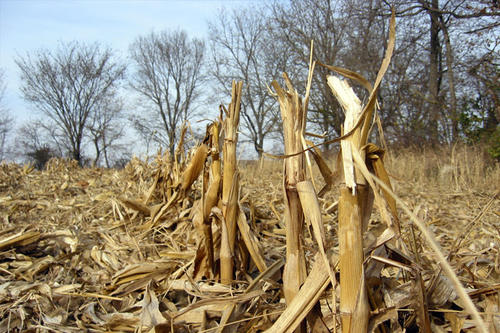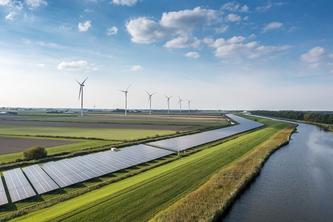
Farmers already facing a difficult year financially didn’t need anything else to complicate their planting window this spring.
Then it started to rain.
In each of the last three months, the U.S. broke its mark for the wettest year on record, according to federal scientists. Through May — planting season — Minnesota had experienced its third-wettest year and the waves of rainfall hit farmers especially hard.
Many delayed planting their crops. Some never got in the ground at all. Corn and soybean in Minnesota are running a week behind schedule, the USDA reported on Monday, and yields are expected to be lower than average. The Federal Reserve warns the impact of this year’s weather on the ag sector could be “severe.”
With climate change creating more frequent extreme weather, the University of Minnesota is working with farmers to research and implement techniques for navigating the new normal.
“I think there is some anxiety about the changing weather patterns. Everybody recognizes that the intensity of rainfall has changed,” said Kathy Draeger, statewide director of the U of M Regional Sustainable Development Partnerships (RSPD).
“I have had more farmers approach me — this spring at track meets or at high school events here in Big Stone County — asking me, what else do you have? What else can I plant? Farmers are looking for those alternatives.”
Axel Garcia y Garcia, an assistant professor and sustainable cropping systems specialist at the U of M, said farmers are already seeing the impacts of climate change in Minnesota.
“Scientific evidence tells us that climate change is occurring. The decrease in farmers’ net income has been declining and extreme weather conditions are adding another burden to these already difficult times,” he said.
“The 2019 growing season is a good example. The spring was wetter and cooler than normal. As a result, planting was very difficult and late, and the establishment of crops was slow — some farmers were not even able to plant. This change in growing conditions brings new challenges that farmers are going to face more often.”
The U of M is conducting research to develop sustainable production practices tailored to changing growing conditions in Minnesota.
The RSDP works to connect farmers and communities to U of M research on sustainability projects that grow economic development around Greater Minnesota. Many of those initiatives are designed to help farmers mitigate or adapt to climate change, Draeger said.
RSDP experts are especially focused on extending the growing season. The University conducted the research that has helped farmers deploy more than 2,500 high tunnels, greenhouse-like structures that allow producers to grow plants even during the cooler months. Fifteen years ago, Minnesota had very few high tunnels.
Researchers have also built five experimental deep winter greenhouses around Minnesota. These installations are designed to limit the amount of fossil fuels used to grow crops during cold winters, including lettuce, herbs, brassicas and sprouts.
Draeger has worked to connect farmers to rural groceries and expand markets for hardier crops like grains and hazelnuts. The goal is to grow more agricultural products and produce more revenue for farmers, all with an eye on sustainability and climate adaptation.
“We are partners in innovation with farmers,” Draeger said. “When a farmer comes to us with an idea or a need, RSDP is a portal between the University and communities throughout the state.”
Researchers across the University System have tested many ways to adapt Minnesota agriculture to a changing climate, from breeding new, resilient crops to developing alternative cropping systems and tracking the spread of pests and invasive species.
At the Southwest Research and Outreach Center (SWROC) in Lamberton, soil scientist and Professor Jeff Strock has conducted on-farm research into drainage and water conservation, aiming to boost the “productivity, profitability and environmental quality” of Minnesota farms.
Strock’s research covers a handful of water management practices, such as expanding the use of bioreactors, investigating better wetland management practices and planting more cover crops, plants designed to preserve nutrient storage in soil.
The SWROC routinely hosts groups of farmers for water management training. Strock’s goal is to help farmers prepare for a changing climate and the altered growing conditions that come with it.
“As we look at the projections that the climate is going to become warmer and we’re going to have more extreme weather, we’re thinking about what to do with the water that we’re draining that takes the nutrients away,” he said.
“How do we keep those nutrients on the farm and reintroduce that water into the system? We’re trying to find ways to do that, considering the future climate patterns that may exist.”
The University’s Research and Outreach Centers are working with farmers to improve the sustainability of their operations. They are also driving climate-adaptive crop research around Minnesota.
“Most of what we do, in terms of research, is first and foremost tailored for conditions here in Minnesota,” Garcia y Garcia, an Extension specialist, said.
“We are not only working with current conditions — weather, the short-term things that happen in a single growing season — but also in the long-term. Farmers are always looking for alternative solutions to what’s going on.”
Learn more about the Regional Sustainable Development Partnerships here and the University’s Research and Outreach Centers here.
- Categories:
- Agriculture and Environment





